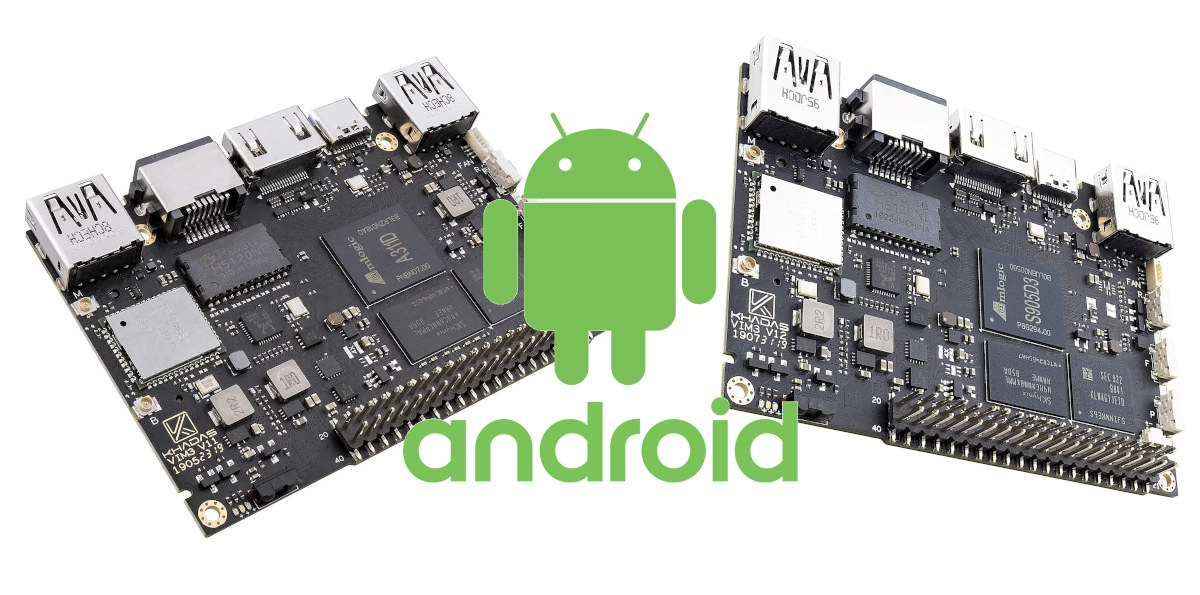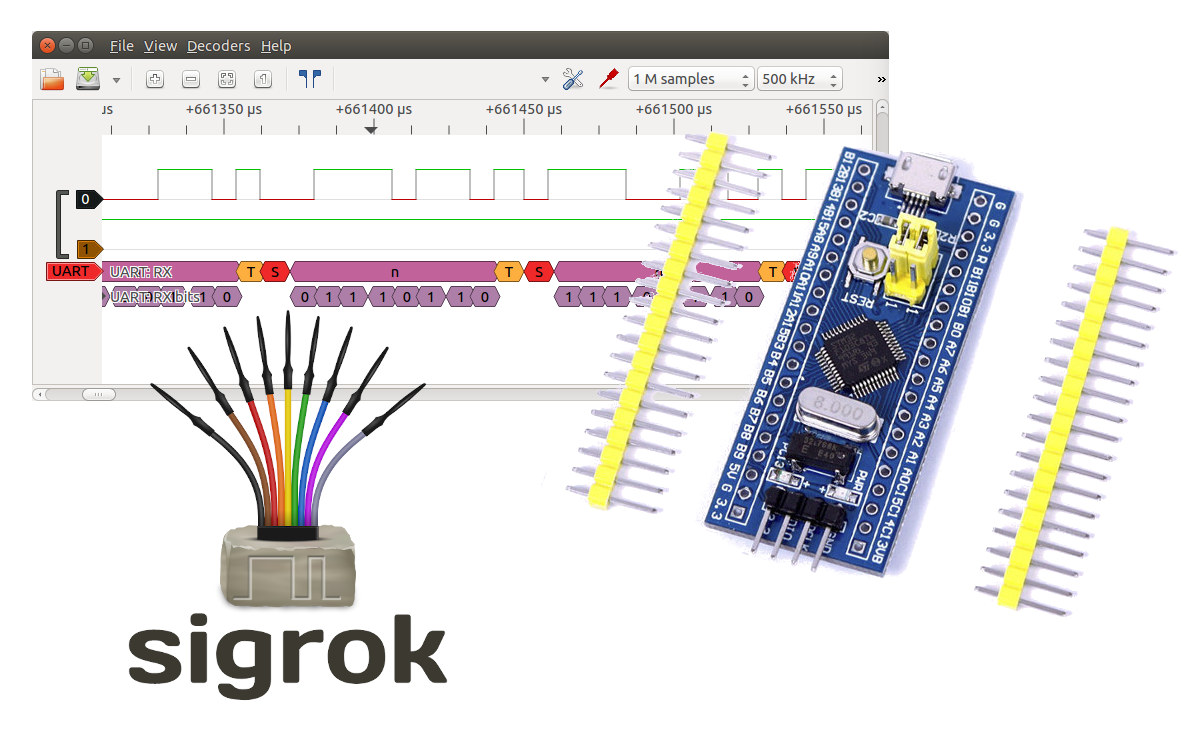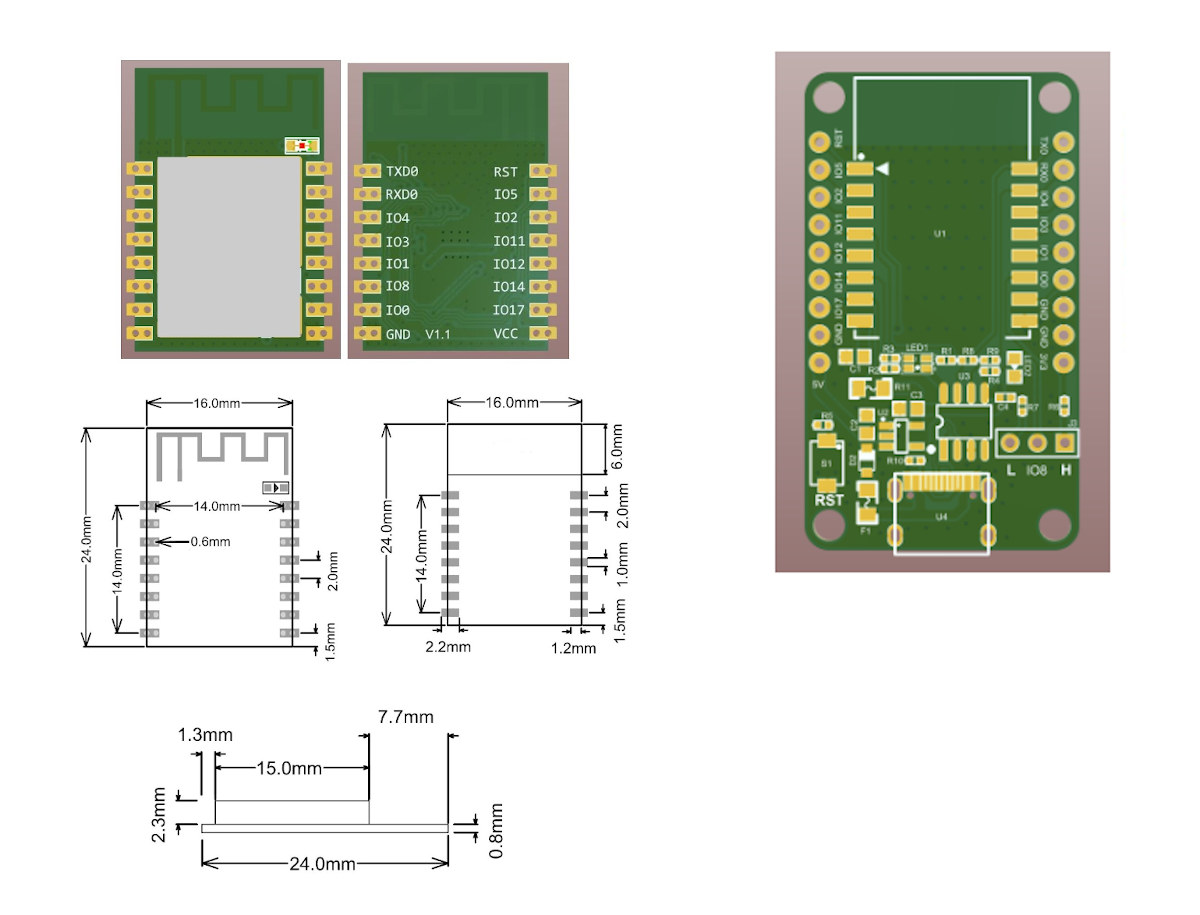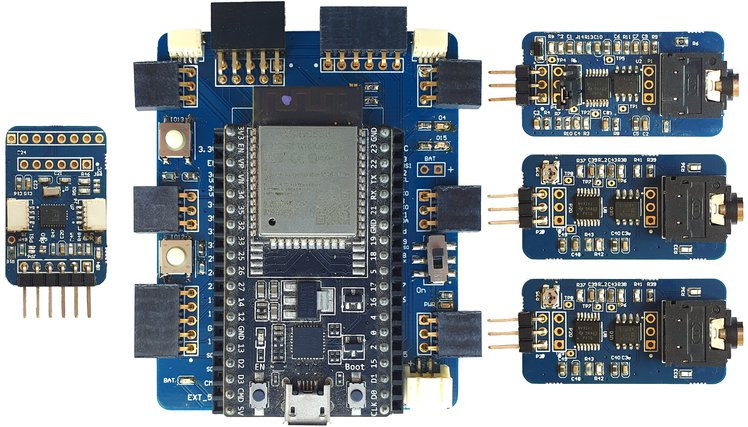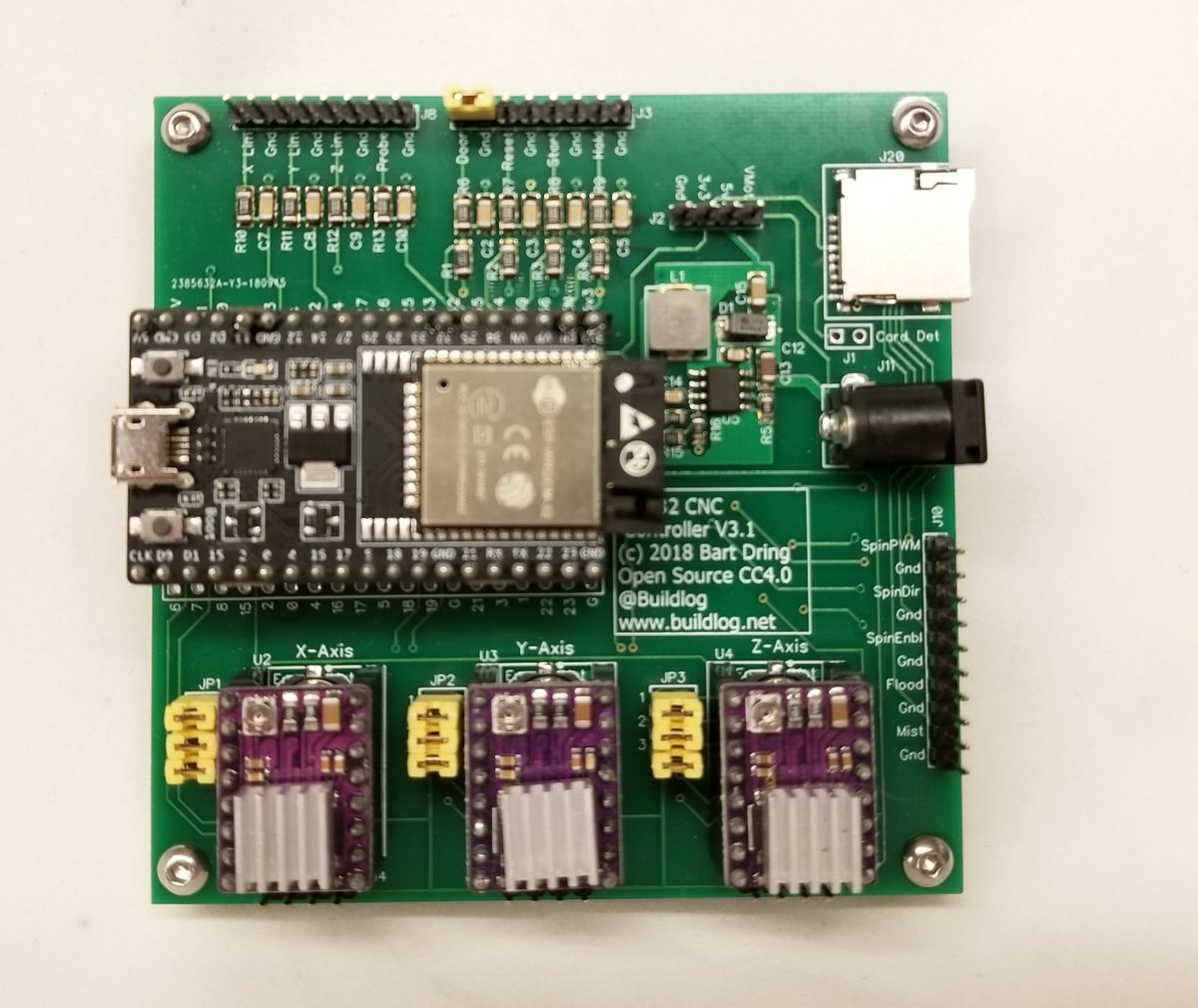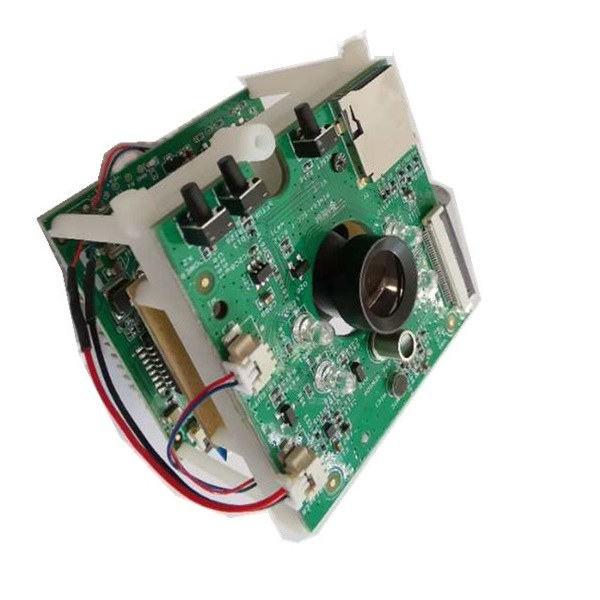If you need to work on the very latest development version of Android or AOSP, you can either get one of the supported phones such as Google Pixel 5, one of the reference boards for Android which should be better for development and also fairly cheaper. We previously reported about Hikey, Hikey960, and DragonBoard 845c single board computers being part of the short list of reference boards for the Android Open-Source Project (AOSP), but Amlogic powered Khadas VIM3 and VIM3L have recently been added to the official devices page which makes them the first AOSP reference boards with a dedicated NPU / AI accelerator. As a quick reminder, Khadas VIM3 is the most powerful board with an Amlogic A311D hexa-core Cortex-A73/A53 processor with up to 4GB RAM and 32GB flash, and Khadas VIM3L is the light version with an Amlogic S905D3 quad-core Cortex-A55 processor with 2GB RAM and 16GB flash. […]
LibIIO – Library for interfacing Linux industrial I/O devices
For more than 6 years, the LibIIO library has existed to ease the development of software interfacing Linux Industrial I/O (IIO) devices. It is part of the Linux Kernel and a subsystem that provides support for devices like analog to digital or digital to analog converters (ADCs, DACs). This subsystem includes ADCs, accelerometers, pressure sensors, color, light and proximity sensors, temperature sensors, RF transceivers, and many more. You can use LibIIO natively on an embedded Linux target. It is cross-platform, supporting Linux, Windows, and Mac OS. Analog Devices Inc. was the main company behind LibIIO development, which is currently an active open-source library, which many people have contributed to. What does LibIIO do? LibIIO will identify the channels that belong to each device. It will assign specific attributes, one for the channels and one for the devices. Then, it will also create a context that is a place where all […]
Turn $1.5 Blue Pill STM32 board into a Sigrok compatible logic analyzer
“Blue Pill” is a popular STM32 development board thanks to its low cost – now as low as $1.50 on Aliexpress – and Arduino compatibility via the STM32duino project. People have created all sorts of projects around the tiny STM32 board, but I find Mark (aka thanks4opensource) buck50 test and measurement firmware very interesting as it turns the Blue Pill board into a logic analyzer compatible with the open-source Sigrok command-line tool and PulseView GUI. Mark explains the firmware is still at the beta stage, so bugs will most likely have to be fixed. Nevertheless, Buck50 firmware should enable the following key features on the Blue Pill board: 8 channel, 6+ MHz logic analyzer Approx. 5K sample buffer depth Samples stored only at signal edges for efficient memory usage Complex triggering via user-defined state machine supporting combinations of sequential (“A then B then C”) and logical-OR (“A or B or […]
Precursor is a mobile, open hardware, dual FPGA development kit (Crowdfunding)
Sutajio Ko-usagi PTE LTD has launched some interesting hardware on Crowd Supply over the years include Novena open-source hardware Arm laptop, and Fomu FPGA USB board. The company is now back with another project: Precursor, a mobile, open-source hardware devkit powered by not one, but two FPGA with Xilinx Spartan 7-Series FPGA, plus a super-low-power Lattice iCE40 UP5K FPGA for deep-sleep system management. The device also comes with a display, battery, and keyboard that make it looks like older Palm or Blackberry phones. Precursor FPGA devkit specifications: FPGA Xilinx XC7S50 primary System on Chip (SoC) FPGA with -L1 speed grade for longer battery life; tested with 100 MHz VexRISC-V, RV32IMAC + MMU, 4k L1 I/D cache Lattice Semi iCE40UP5K secondary Embedded Controller (EC) FPGA for power, standby, and charging functions; tested with 18 MHz VexRISC-V, RV32I, no cache System Memory – 16MB external SRAM Storage – 128MB flash Display -536 […]
The quest for a blob-free WiFi & Bluetooth stack for BL602 WiSoC
I thought I was done writing about Bouffalo Lab BL602 WiFI & Bluetooth RISC-V SoC for a while after first covering the chip itself, and then an inexpensive BL602 development board this weekend. But the BL602 SDK has shown up in various Github repositories, including Bouffalo Lab’s own bl_iot_sdk repository, and as more people are looking into it, there’s now an effort to develop a fully open-source blob-free WiFi & Bluetooth stack for BL602, and other Bouffalo Lab WiFi and/or Bluetooth wireless chips. Last day we communicate with Bouffalolab, finally they release the SDK of BL602 (RV32 chip of wifi+bt), all code is open, except libblecontroller.a, libatcmd.a, libbl602_wifi.a (while they have all symbol inside)https://t.co/giHsQ4ezXxwe have a fork too https://t.co/FiaAIxLBc8 — Sipeed (@SipeedIO) October 27, 2020 First, Sipeed says the code is mostly open-source except for three libraries: ibblecontroller.a, libatcmd.a, libbl602_wifi.a, all of which are un-obfuscated, and easy to disassemble. Then […]
E3K all-in-one wireless bio-sensing platform supports EMG, ECG, and EEG sensors (Crowdfunding)
Over the year, The maker community has designed several platforms to monitor vital signs with boards like Healthy Pi v4 or HeartyPatch both of which are powered by an ESP32 WiFi & Bluetooth wireless SoC. WallySci has designed another all-in-one wireless bio-sensing platform, called E3K, that also happens to be powered by Espressif Systems ESP32 chip, and can be connected to an electromyography (EMG) sensor to capture muscle movements, an electrocardiography (ECG) sensor to measure heart activity, and/or an electroencephalography (EEG) sensor to capture brain activity. The board also has an extra connector to connect a 9-axis IMU to capture motion. E3K main board which the company refers to as “Data Communication and Processing Unit” (DCPU) comes with the following specifications: Supported wireless board – ESP32-DevKitC with ESP32-D0WD-V3 dual-core 32-bit LX6 microprocessor, up to 240 MHz, Integrated 520 KB SRAM, 16 MByte SPI flash. 2.4 GHz WiFI 4, and Bluetooth […]
ESP32 CNC Controller Board Supports Grbl Arduino Firmware
Grbl_ESP32 CNC development board is a breakout board for NodeMCU 32S board that also takes three stepper motor drivers, and designed to run Grbl open-source Arduino firmware to control wireless CNC machines. Grbl_ESP32 CNC breakout board specifications: Socket for NodeMCU 32S board with ESP32 WiFi and Bluetooth dual-core SoC 3 sockets for stepper motor drivers such as TI DRV8825 types and others. Micro-step selection jumpers included. MicroSD card socket Home/Limit switch connections for XY and Z axes. Control switch input connections for Feed Hold, Cycle Start, Reset, and Door. Spindle output for PWM to control speed. 3A DC-DC power supply to run the ESP32 if it is not connected to USB Grbl CNC firmware was initially developed for the Arduino UNO and basic 3 axis CNC routers around 10 years ago, but has since then been ported to other CPUs and is now found in other types of CNC machines […]
PineCube open-source Linux IP camera devkit launched for $30
Pine64 has been a busy company/community with the launch of Linux powered Arm development boards, PinePhone smartphone, PineTab tablet, and Pinebook Pro laptop in the last two years. They also had other smaller projects that got fewer resources due to the launch of the aforementioned products and COVID-19 induced delays, and one of those is PineCube open-source IP camera development kit that finally launched for $29.99 plus shipping. PineCube hardware specifications: SoC – Allwinner/Sochip S3 Arm Cortex-A7 processor @ 800MHz with 128MB in-package DDR3 RAM Storage – 128Mbit SPI Nor Flash and MicroSD slot, both bootable Camera – 5MP OV5640 sensor Audio – Built-in microphone, speaker Display – Optional 4.5-inch RGB LCD screen ( Networking – 10/100M Ethernet with passive PoE and WiFi USB – USB 2.0 Type-A host port Expansion – 26-pin GPIO header Misc – Volume and home buttons Power Supply 5V/1A via micro USB port or GPIO […]


